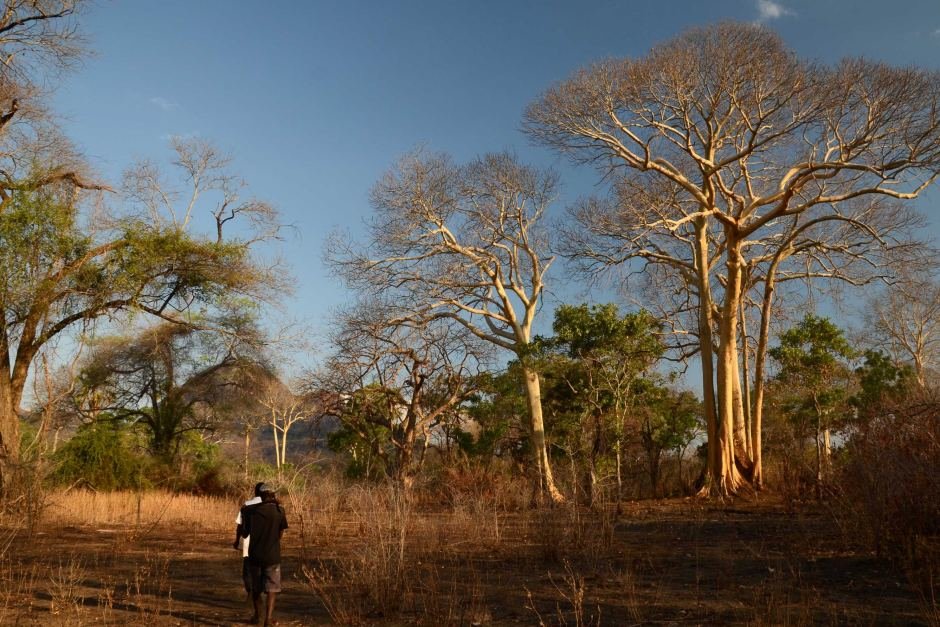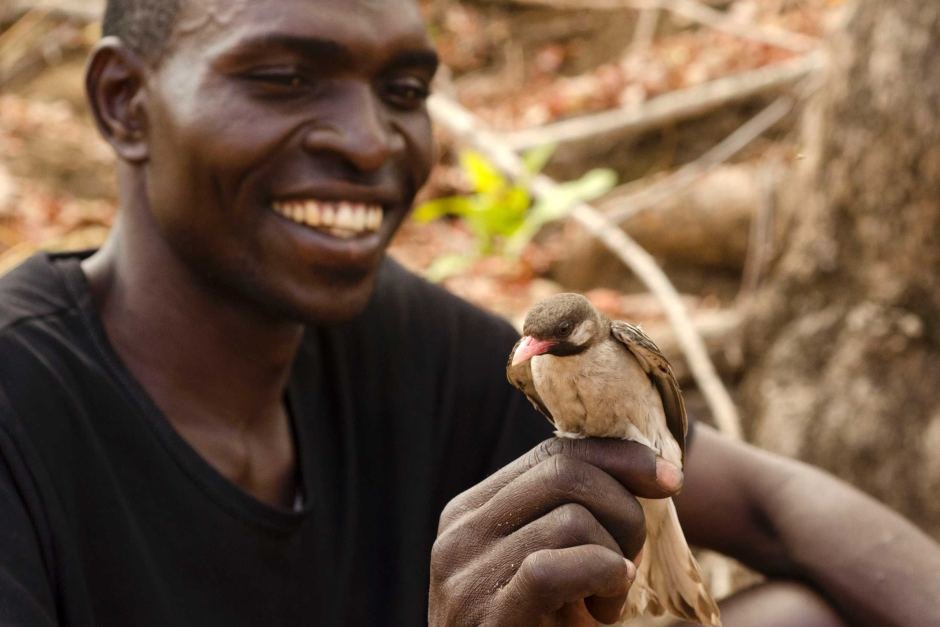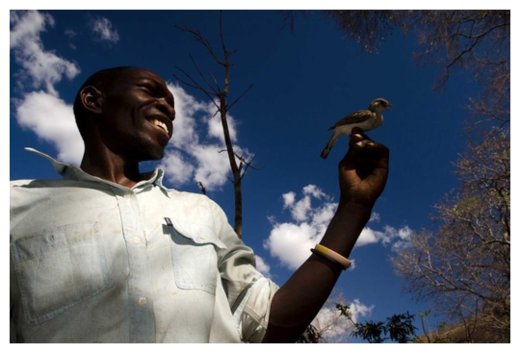But not only do humans seek out the small birds known as honeyguides, the birds also actively seek out humans ensuring both species benefit, a new study shows.
Pioneering work by the Kenyan ecologist Hussein Isack in the 1980s confirmed honeyguides communicate reliable information to humans about the location of bees' nests, and this greatly increased honey-hunters' harvests, said the study's lead author Dr Claire Spottiswoode of the University of Cambridge in the UK and the University of Cape Town in South Africa.
In return, the greater honeyguide (Indicator indicator), which feeds from bees' nests, eating eggs, larvae and beeswax, relies on their human partner to crack open the hive.
"It's a remarkable example of cooperation between humans and a free-living wild animal," Dr Spottiswoode said.
But in a new study of the Yao honey hunters from Mozambique's Niassa National Reserve, published today in Science, Dr Spottiswoode and her colleagues show the interaction has an extra dimension.
Not only do the Yao honey hunters follow the birds' call to guide them to the hive, the birds themselves seek out the specific call made by the hunters to initiate the hunt.

"They make this sound only in this context, so it's a reliable signal to honeyguides that a human is looking for bees."

Dr Spottiswoode and her team recorded the "brrr-hm" sound made by Yao honey-hunters, as well as two other different sounds, used as controls. Researchers then followed the Yao men while playing back these sounds at regular intervals.
The team found that using the "brrr-hm" sound resulted in an increased probability of being guided by a honeyguide from 33 per cent to 66 per cent and increased the overall chances of finding a bees' nest from 16 per cent to 54 per cent, compared to using the control sounds.
"It's a startlingly odd noise, but our experiments showed that it works — giving this sound doubled the chance of being guided by a honeyguide, and tripled the overall chance of actually finding a bees' nest, so honeyguides really are paying attention to signals that humans communicate back to them.
"It's a two-way conversation between our own species and a wild animal, from which both partners benefit," she added.

The findings add to our understanding of a very rare instance of humans collaborating with a wild, free-living species, towards a common goal.
So far there are only a few other examples of collaboration between humans and a wild species.
One case, known from some parts of Australia, and a few other places around the world, involves fishermen "working" with dolphins to catch fish.
And another case involved the collaboration with killer whales, according to a review of these interactions published in 2002 by Dr David Neil of the University of Queensland.




Reader Comments